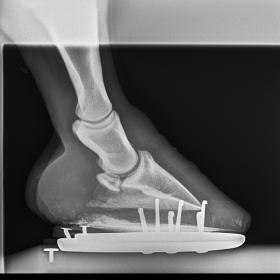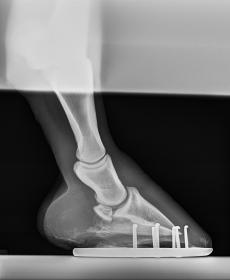For starters… I’d be finding a different farrier. I would not keep using this one. There isn’t any reason to let a horse get this bad - and this is something you would be able to see with a naked eye, in terms of whether it is a fundamentally healthy hoof (it’s not).
Chances are, his other three hooves are much the same in terms of being grossly unbalanced.
I would try to alleviate his discomfort while you find professionals that can do better by your horse. It might be worth it to get your hands on any sort of farrier literature you can, and read up on the pathologies of an unhealthy hoof so next time, you can recognize them before they get this bad.
It is really disappointing - we put so much of our faith and trust into professionals that they are doing things correctly… sadly been on the receiving end of that and learned to develop my own eye rather than trust the opinion of another.
I went through something very similar about 3 years ago. It was hard to break ties with the farrier I had used for over a decade, but I did it and my horse’s feet have significantly improved. It also takes time, months of correct trimming, to get that hoof back to where it needs to be.
One thing that helped my gelding while we were going through this was that the new farrier had him in rim pads up front and steel shoes (he was barefoot) behind. The reasoning for this was his sole had become extremely thin in the process, and he needed a little clearance from the ground while working on his other issues. My farrier was very conservative each trim, as he had seen a lot of farriers correct things too swiftly and cause issues.
When the angles are as bad as that x-ray, you probably have a horse that’s sore all over. When toes get that long and the heel that underrun it forces the pastern down which causes a lot of stress to the tendons & ligaments in/around the hoof and limb. That creates body soreness by default: if you can get this horse on something like Previcox, and keep him moving around so there is not too much build-up of inflammation, I think you’ll have a better shot at keeping him comfortable.
Good luck!



